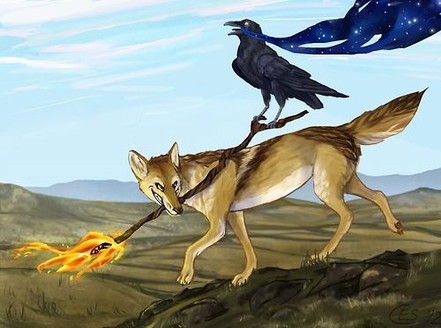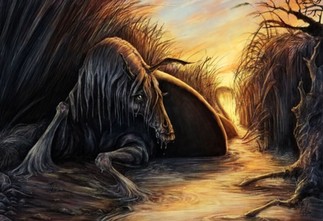John Veverka & Associates
Main menu:
- Home Page
- Our Range of Services
- Interpretive Coaching
- Interpretive Planning
- Interpretive Plan Outline
- Interpretive Training
- John Veverka Resume
- NEW Advanced Interp. Text Book
- InterpNEWS
- Library
- JVA NEWS, Courses and Updates
- Certificates
- Planning/Design of Interpretive Panels
- Interpretive Writing
- Interpretive Writing Course
- Interpretive Trails Course
- Interpretive Panels Course
- Introduction to Heritage Interpretation Course
- Interpretive Planning & Design of Marketing Brochures Course
- Training for Interp. Trainers
- Interpretive Exhibits Course
- Interpretive Master Planning Course
- Interpretive Planning for Scenic Byways.
- Critiquing and Coaching Interpretive Staff
- Advanced Interpretive Planning
- Interpretive Training Center Course Catalogue
- Interp. for International Visitors course.
- Interpretive Exhibits Evaluation
- Interp. Center Feasibility Analysis Course.
- Interp. for Commercial Tour Providers
- Interpretive Researchers Guide for Visitor Studies
- Interp. Planning for Historic Homes
- Heritage Interpretation Training Center
- Interpretive Planning for Botanical Gardens
- An introduction to planning and presenting live interpretive programs and tours for Museum/Heritage Site Docents and Volunteers.
- Developing Marketing Plans for Heritage & Tourism Sites and Attractions
- Interpretation Book Store
- Heritage Interpretation Resource Center
- Interpretive Planning for Historic Farms
- Developing Successful Partnerships
- Developing Interpretive Outreach Programs
- Community Interpretation Planning
- Interpreting Gravestones and Historic Cemeteries
- Using Interpretation to Accomplish Management Objectives.
- An Interpreters Guide for Survival Economics.
- Innovative Strategies for Interpretive Media and Services Planning.
- A Curators Guide for Developing Gallery Tours.
- Advanced Interpretive Writing - Technical Publications
- Advanced Interpretive Services for Managers, Supervisors, Team Leaders and Sr. Staff.
- Advanced Interpretation for Chiefs of Interp. - Interpretive Managers - Regional Interp. Specialists
- Interpreting Critical Issues.
- Developing Commercial Interpretation for Resorts, Cruise Ships, Campgrounds and Tourism Attractions.
- Planning and developing a new commercial tour guiding business.
- Interpretive Evaluation, Visitor Studies and Site Assessment Center
- The Center for Interpretive Planning Advancement & Excellence.
- Developing Requests for Proposals (RFPs)
- Planning and Facilitating Focus Workshops
- Planning for Interpretive Experiences
- 40 Years a Heritage Interpreter
- Interpretive Techniques - The Rest of the Story Course
- Certified Professional Interpretive Planner Certificate
- Certified Professional Interpretive Program
- Certified Professional Interpretive Writer certificate program.
- Visitor motives for attending interpretive programs.
- Exhibit Rehab Course
- Developing Training Workbooks & Manuals
- Planning for Railroad Museums and Sites.
- Climate Change Interpretation Course.
- When there's nothing left but the story - interp. storytelling.
- Interpreting Legends Myths and Fables
- InterpSHARE - Seminars 2022
- Interpreting Invasive Species
- Interpretiing Edible Insects
- Interpretaive Planning for Climate Change
- HITC Climate Crisis Resource Center
- PUP Members Only
- Starting a new Interp Consulting Business
- Panels 4 Week Course
- Interpretive Writing - 4 Week Course
- Marketing - 4 Week Course
- Intro to Interpretation - 4 Week Course
- Interp Climate Change - 4 Week Course
- Exhibit Rehab 4-Week Course
- Level 1
- Johns Interpreters Blog
- John Interpreters Blog 2
Interpreting Legends Myths and Fables

Interpreting Legends, Myths and Fables.
Storytelling when folklore is already part of our cultures.

How the Coyote stole fire (Native American Fable), and the Legend of the Kelpie
(waterhorse) - Scotland.
When I was a Seasonal Interpretive Naturalist with Ohio State Parks and doing my evening campfire programs, the visitors always wanted a story. From ghost stories to Bigfoot to things that go bump in the night - they wanted the story. Amazingly, many legends and myths have some bases in reality, or taught a lesson. For example, the legend of the Blue Man of the Loch in Scotland was told to keep young children away from the lake shores. The Native American fable of how coyote stole fire to give it to humans was teaching about our connections with the natural world. Our cultures are surrounded by legends, myths and fables, all of which had (or still have) important cultural connections. This course is to help you re-discover your sites or regions stories and present them to your visitors, weather around an evening campfire, a guided walk in a historic district or cemetery, through a cultural heritage museum exhibit.
Eight Units - $150.00 tuition,
2 CEU Unit Credits.
Unit One - what are legends, myths and fables? Let's revie the role of each in our different cultures. They are present world wide.
Unit Two - What legends, myths or fables are relevant to my site or region, and to add to my interpreting the cultural and natural heritage of my region to my visitors? Time to investigate.
Unit Three - From your decision of which legends, myths or fables are appropriate for you to interpret - gather your reference materials to compose your interpretation.
Unit Four - Planning for your story presentation. How, when and where will to tell your story? Evening campfire, outdoor amphitheater presentation - guided walk or night hike, exhibit, self-guiding material? Which will you use and why? What will your theme and objectives be?
Unit Five - Story presentation II. What will you need for your presentation? Will this be a costumed interpretation (visitor from the past)? Will this be a gravestone/cemetery tour where visitors meet (at night) past village residents? Will you need any sound effects, graphics, or other teaching aides? Plan using an interpretation planning check list.
Unit Six - Interpretive writing - preparing your script, oral presentation or text copy. Using interpretive writing principles to take your research and story to "provoke, relate and reveal" your story to your visitors.
Unit Seven - Who are your visitors anyway? What would their interest be in your legend myth or fables? How will you "relate" the story to your visitors?
Unit Eight - Put it all together for your presentation plan. Your theme, your objectives, your research, your presentation details (how, when, where), your target audiences, your content and your script or text. This is the final "product" for this course. Looking forward to seeing how you will be presenting this program or experience.
If you have any questions please feel free to contact me. To register for the course just click on the Pay Now button and we can get you started.
Prof. John Veverka
jvainterp@aol.com
SKYPE: jvainterp